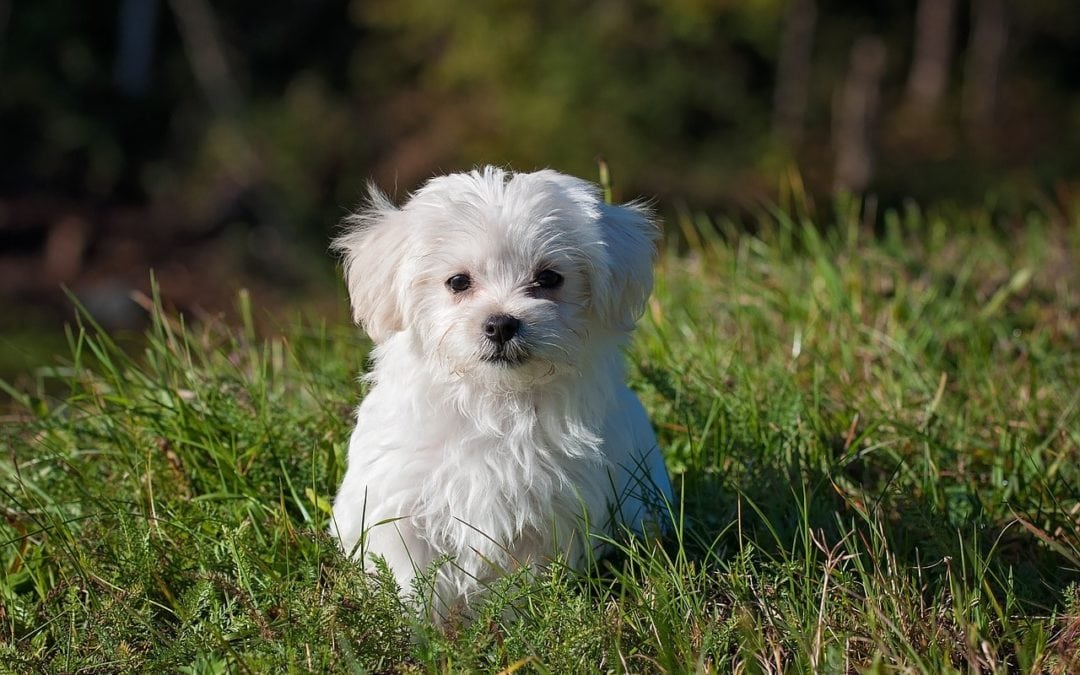During the spring time, we tend to see an increase of parvo positive dogs. What is parvo you ask? Well, the first thing I have to say about parvo is it’s preventable and you should do everything in your power to do just that, prevent it! How do you prevent it and why is it so important to do so? You prevent it by following a strict protocol of vaccinating and making sure that while your puppy is going through its series of boosters that your pup only socializes with pups that are following the same strict protocol. The vaccine is extremely important because parvo is a viral disease that has no known cure and can be fatal. Let me repeat that. Parvo is a viral disease that has NO known cure and can be FATAL. To make it even worse is how contagious it is.
When a dog has parvo, heavy concentrations of the virus are found in the stool. Even up to two months after your pet has recovered from parvo, it is still shedding the virus and is contagious. The virus can live in the ground soil for up to a year and anyone or anything, walking through the infected area is now carrying the virus on their feet, everywhere they go. So what, it’s on their feet, what harm is that? Then let me ask you this…how often does your dog lick its feet? Mine are doing it at least once an hour and that’s all it would take. When treating parvo positive canines in our hospital, they are put into isolation and a strict protocol is followed to ensure nowhere else in the hospital is contaminated. Usually there is one person designated to “parvo land” and they end up looking like someone from CDC with a full wardrobe made of disposable scrubs, including booties. Before they are allowed to leave “parvo land”, any soiled laundry is placed in a special bin that gets washed twice; the second washing using bleach to destroy the virus; the scrubs are removed, and a decontamination spray is applied to the bottom of shoes. You can never be too careful, when trying to prevent the spread of this deadly virus.
Some of the symptoms that you’ll see in a parvo positive dog will vary depending upon how far along the disease has progressed. There are also two different forms of parvo. The less common form is the cardiac form where the virus attacks the heart muscles. This one is extremely dangerous on the younger pups that are still growing and don’t yet have the strongest of heart muscles. The intestinal form of parvo is what is seen most often, causing extreme diarrhea, often with blood in it, vomiting, (decreasing the amount of nutrients absorbed through the body), uncomfortable and painful abdomen, lack of appetite and lethargy. Imagine the worst intestinal flu you could ever have and how it made you feel. Now imagine a dog feeling this way. As humans, we know that we MUST still continue to get fluids into our body or we’ll end up in the hospital, dehydrated and hooked up to fluids. Dogs on the other hand, just won’t drink or eat when feeling so sick, leading to dehydration and organs that begin shutting down. The earlier the prognosis (which is determined through blood work), the better chance of surviving the disease.
Treating dogs that are positive for parvo consists of IV fluids for the dehydration, medicines to help stop the nausea and diarrhea and sometimes antibiotics to help fight off any other bacterial infections while the immune system is working hard to overcome the virus. Treatment usually lasts an average of 3-7 days and they usually get worse before they get better. If caught early enough, before severe dehydration sets in, there is a 75% survival rate. Seeing these dogs suffer through this one time, is enough to make sure you’ll never let it happen again to any dog you own. And don’t be fooled, your dog that recovered from parvo, still needs a parvo vaccine. Recovering from parvo will give your dog a longer immunity from parvo but it’s not a guarantee, therefore vaccinating is still highly recommended.
Furthermore, some breeds are more vulnerable than others (Rottweilers, Dobermans, Pit Bulls, Black Labs, German Shepherds, English Springer Spaniels and Alaskan sled dogs) and the younger the pup is, the less vaccines they’ve received, resulting in a lower immune system and increased chance of getting infected with parvo.
If you have a dog that is showing symptoms, suspicious of parvo, it is extremely important that you follow a few preventatives that helps us lessen the spread of the virus.
• Call your veterinarian immediately to schedule an appointment
• If possible, call your vet once you arrive in their parking lot, so they can assist you with opening doors and getting you straight to where you need to be
• Do not walk your pet; if your pet is positive, you are contaminating more areas and possibly spreading the virus to others
• Bring as few people and belongings with you as possible
• Stay with your pet in the exam room
• Remember that you are possibly carrying the virus on your own shoes and contaminating anywhere you walk
Just like so many other things in life, prevention is the key. Vaccinate your pets and keep them out of “parvo land”! Our Gahanimal crew would be so very happy, if they never had to step foot in there again!




